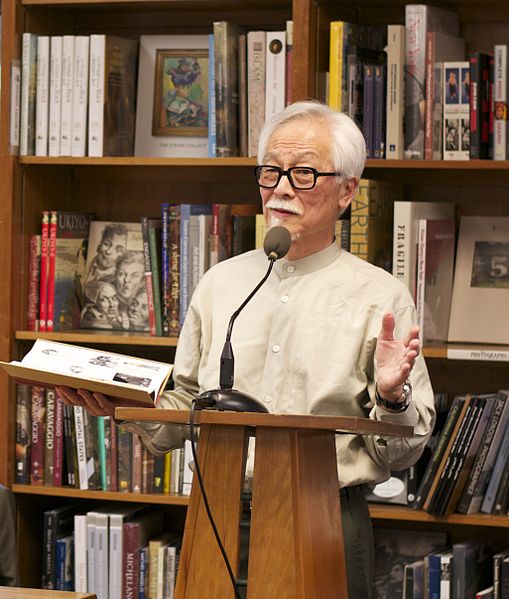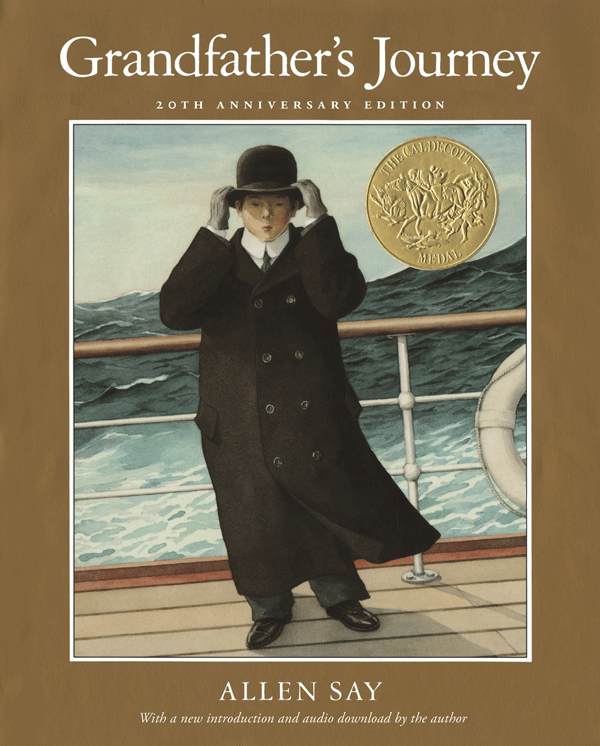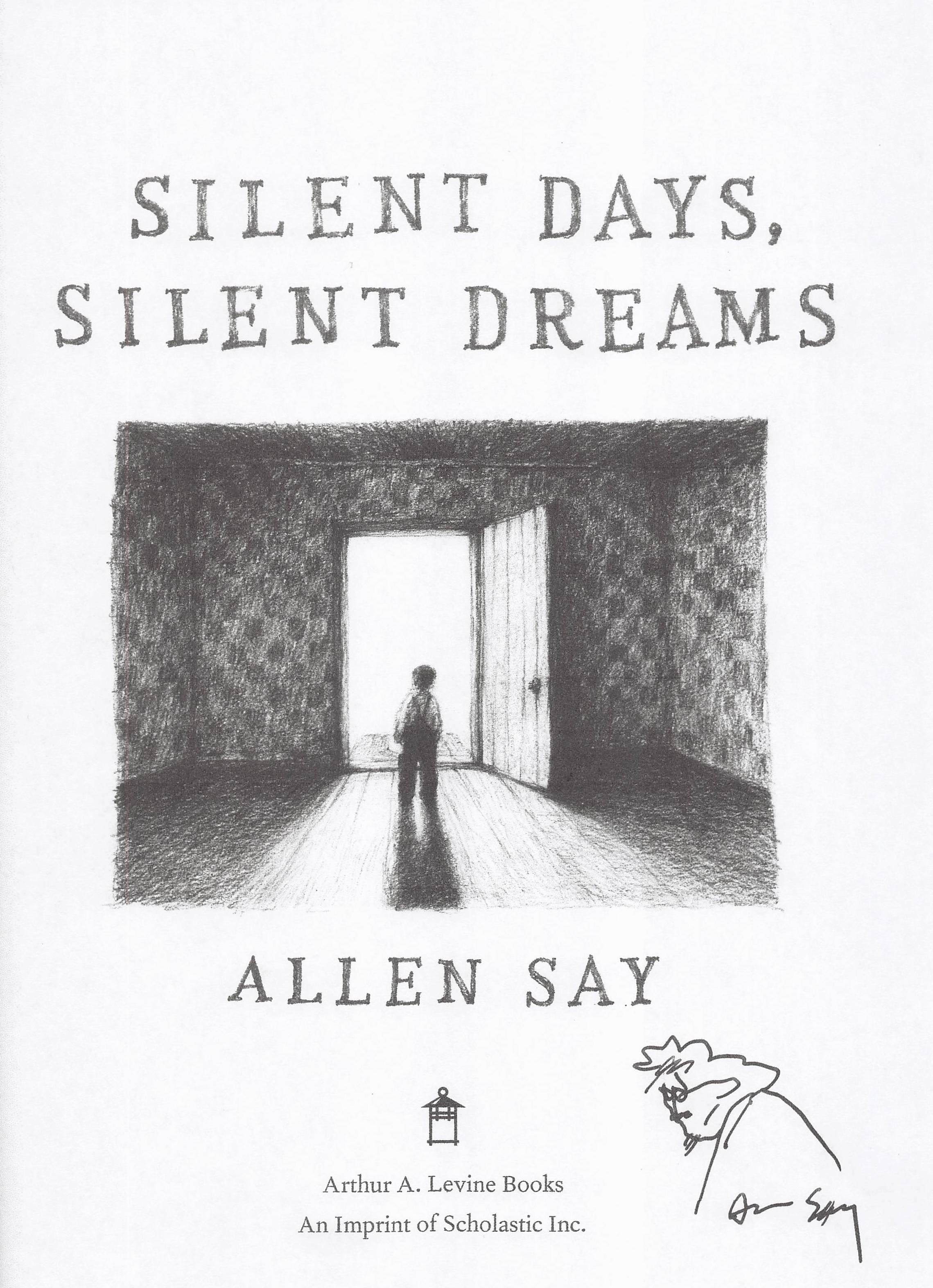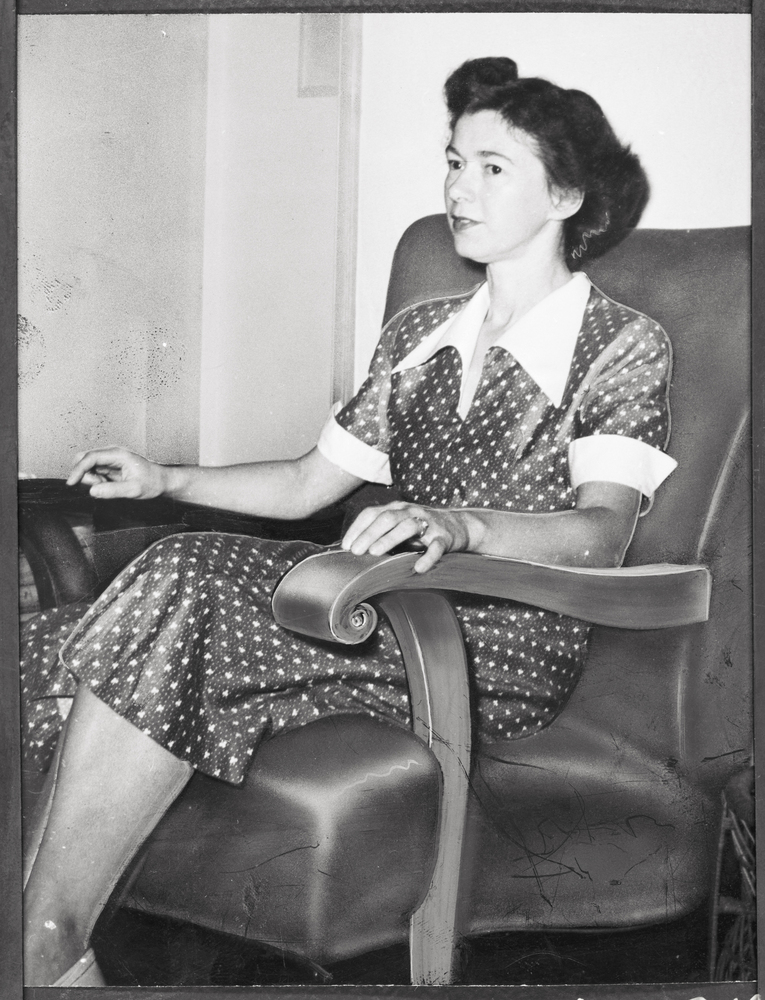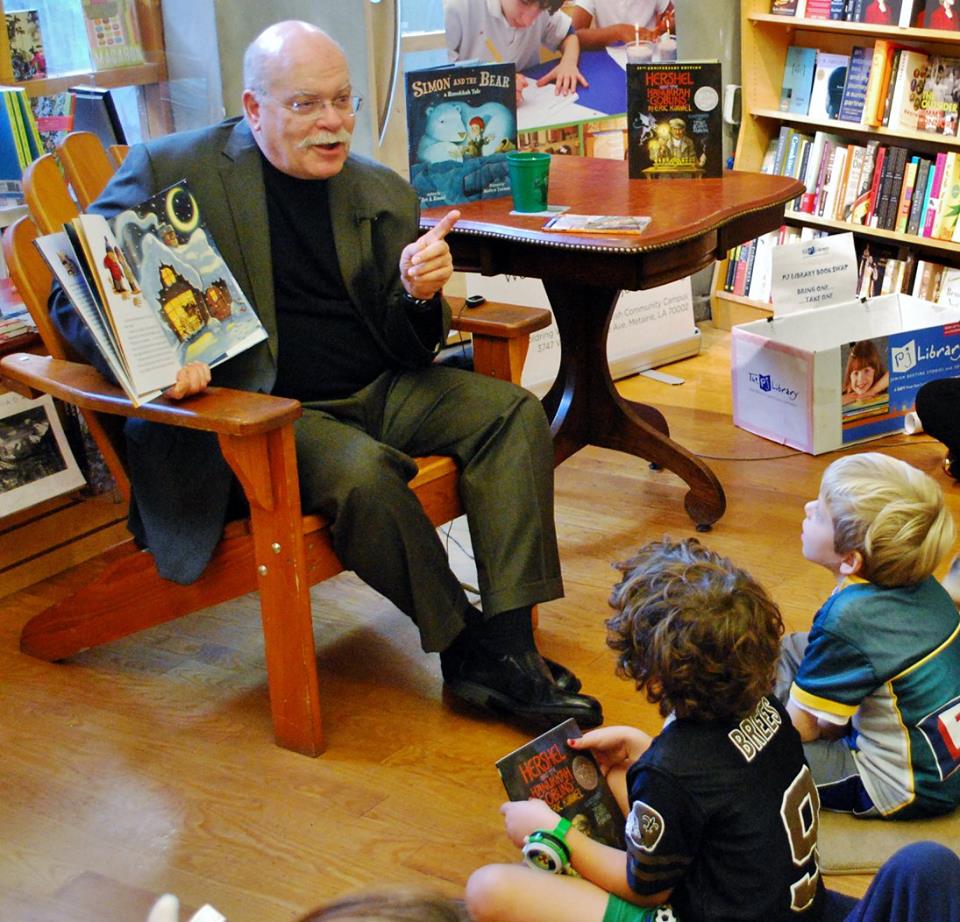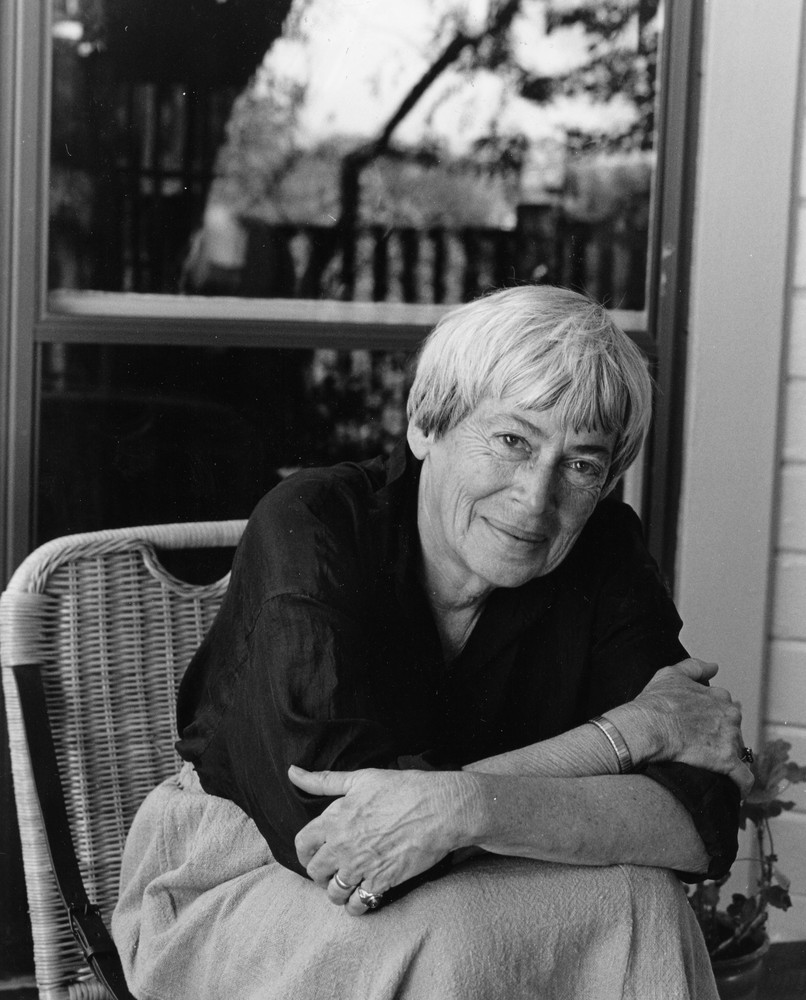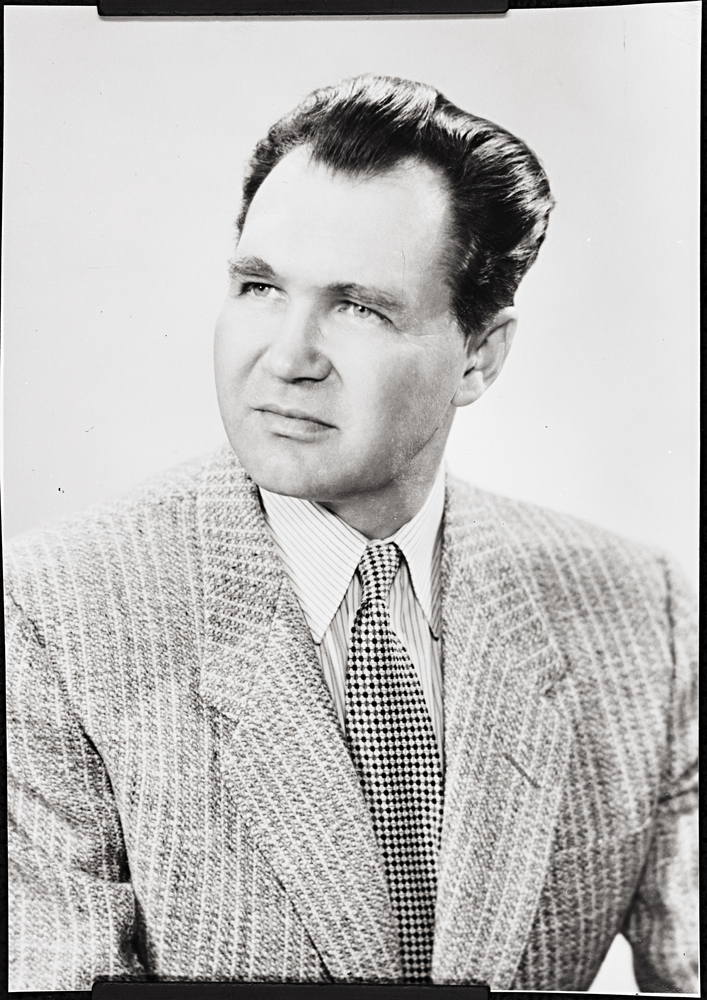Most of the books by artist and writer Allen Say are about his personal experiences, people in his family, and influences on his work. The realism in his writing focuses on the power of stories, the lure of nature, and the reality of dreams to describe Japanese identity and culture. Say is the author and illustrator of books for young readers and is the recipient of many awards, including the Oregon Book Award and the Caldecott Medal. He has lived in Portland since 1999.
Allen Say was born in Yokohama, Japan, on August 28, 1937. His mother Masako was a Japanese American born in California and raised in Japan, and his father Joseph was a Korean orphan raised by a British family in Shanghai. At home, his parents spoke English to each other but Japanese to him. His mother taught him to read before he started school, and he read comic books to other children, which inspired him to draw and tell stories.
When American bombs fell on Yokohama in 1945, Masako took her children to Tabuse to stay with Allen’s uncle. It was the first of almost forty moves that Say would make in his life. The house in Yokohama was destroyed, and the family moved to Kyushu, where his father found work.
Say’s first-grade teacher in Kyushu, Mrs. Morita, was the first of several teachers who encouraged him as an artist. It was there that he first encountered the work of Noro Shinpei, a popular cartoonist. When Say was twelve and living in Tokyo, he became Shinpei’s apprentice and inker. Shinpei gave him work and advice: “To draw is to discover—and to be astonished.” Shinpei also created a character, Kyusuke, for his Demokurashee-chan comic strip, modeled after Say. In Tokyo, Say saw a Vincent van Gogh exhibit that influenced his art.
Say’s parents divorced, and his father moved with his new family to California in the early 1950s. He asked fifteen-year-old Allen if he wanted to go to America to make a name for himself. At sixteen, Say arrived in Long Beach, California, with ten dollars from his father. A family friend drove him to the Harding Military Academy in Glendora, where he worked for his room and board and learned how to drive. He left school after a year and enrolled in a high school in Azusa, where teachers once again encouraged his artistic work. He took classes at Chouinard Art Institute and the Art Center College of Design in Los Angeles; Say credits his teachers there with changing his life. On a trip to Yokohama to visit his family, he realized the similarities between him and Kyusuke, his cartoon self.
By the early 1960s, Say was an architecture student at the University of California at Berkeley. He was drafted into the U.S. Army in 1962 and was stationed in Germany. During his two years in the military, Say’s photography appeared in Stars and Stripes, the army’s newspaper. After returning to California, Say worked as a freelance photographer and wrote and illustrated his first book, Dr. Smith’s Safari (1972), illustrated other writers’ books, and wrote an autobiographical novel, The Ink-Keeper's Apprentice (1979). Say moved to Portland, Oregon, in 1999.
Say’s illustrations in his autobiographical books Drawing from Memory (2011) and The Inker’s Shadow (2015) include mixtures of realistic and abstract, framed and unframed, and black and white and color drawings. He continued this approach in his next two picture books. Silent Days, Silent Dreams (2017) is an inventive biography of James Castle, a deaf, autistic artist who drew mostly with burnt matchsticks. Almond (2020) is a character study with portraits of a girl who discovers her own talents when a new girl comes to her school.
Writing in a style that is precise and understated, Say sometimes merges the real and the surreal in his books, using photographs, pen-and-ink sketches, and watercolor paintings to illustrate them. His picture books include Erika-San (2009) and Drawing from Memory (2011), which were awarded the Oregon Spirit Book Award by the Oregon Council of Teachers of English, and Drawing from Memory, which won an Oregon Book Award in 2013. The Boy of the Three-Year Nap (1993), written by Dianne Snyder, won a Caldecott Honor Award and the Boston Globe-Horn Book Award for Say's illustrations. Grandfather's Journey (1993) was awarded the Caldecott Medal by the American Library Association.
An exhibition of Say's illustrations was at the Japanese American National Museum in Los Angeles in 2000, and The Art of Allen Say: A Sense of Place was exhibited at the Eric Carle Museum of Picture Book Art in Amherst, Massachusetts, in 2007. The Multnomah County Library presented a retrospective of Say’s work in 2015. In 2020, Say received The Original Art Lifetime Achievement Award from the Society of Illustrators, The Museum of Illustration.
-
![]()
Allen Say.
Courtesy Politics and Prose Bookstore
-
![]()
Grandfather's Journey, by Say.
Courtesy Houghton Mifflin Harcourt
-
![]()
Silent Days, Silent Dreams book cover with autograph and self-portrait by Allen Say.
Courtesy Paul Gregorio
Related Entries
-
![Beverly Cleary (1916-2021)]()
Beverly Cleary (1916-2021)
Beverly Cleary is Oregon’s most famous author of children’s books. Born…
-
![Children's Festival]()
Children's Festival
Each July, the Storytelling Guild of Medford presents the Children's Fe…
-
![Eric A. Kimmel (1946–)]()
Eric A. Kimmel (1946–)
Eric A. Kimmel is Oregon’s most prolific writer of children’s and young…
-
Ursula K. Le Guin (1929–2018)
Ursula K. Le Guin, one of Oregon’s preeminent writers, was born Ursula …
-
![Walt Morey (1907-1992)]()
Walt Morey (1907-1992)
Walt Morey (1907-1992) was one of four iconic writers who dominated chi…
Map This on the Oregon History WayFinder
The Oregon History Wayfinder is an interactive map that identifies significant places, people, and events in Oregon history.

